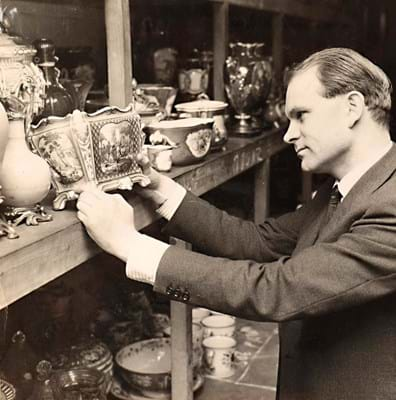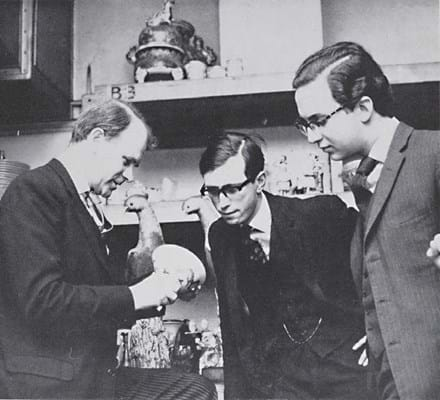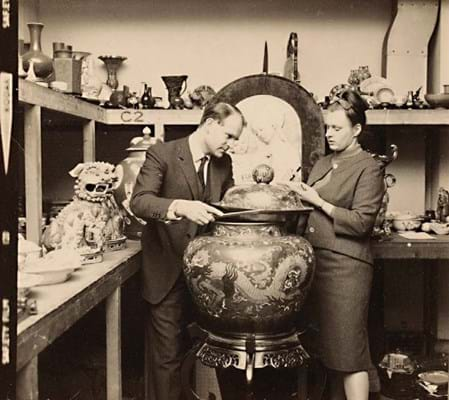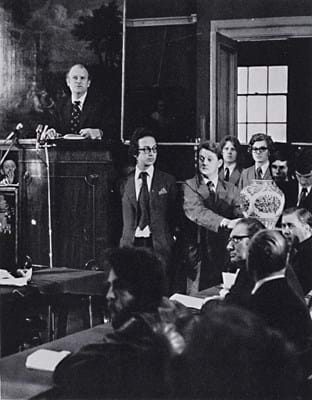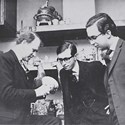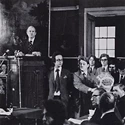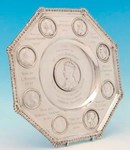Not merely an international authority on ceramics of many kinds, he was also the longstanding director of the Asian, Islamic and European ceramics departments at Christie’s, all of which he had created as specialised spin-offs from Christies’ revered ‘Furniture Department’ after the late 1960s.
Anthony John Houssemayne du Boulay was born of Huguenot stock as the last of five children in a land-based naval family.
He joined Winchester College in 1943, and remained a faithful alumnus, presenting it with a group of his Chinese ceramics in autumn 2021.
While at Winchester, aged 16, he bought his first major piece of porcelain, although it would take him (and many other specialists) several decades to identify that what he had bought in a job lot at a house sale in Eastleigh was a unique vase and cover: the largest vessel surviving from London’s ‘lost’ porcelain factory at Vauxhall Cross.
Joining Christie’s
Anthony joined Christie’s in 1949 as junior cataloguer in the furniture department handling all ‘decorative arts’ from Roman glass and Nymphenburg porcelain to Renaissance bronzes and Ming jades. Increasingly focused on ceramics, he was luckily taken under the wing of a generous mentor, the scholarly Jim Kiddell at competitor Sotheby’s.
Christie’s was best known for its ‘country house’ connections, its Chinese art auctions offering more Chinese export porcelain, not classical domestic-market Chinese ceramics which traditionally Sotheby’s sold in Bond Street.
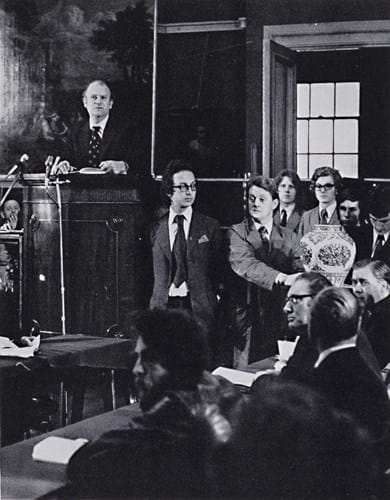
An image of Anthony du Boulay originally published in the Arts of Asia July-August 2019 issue and kindly sent to ATG for use here.
Photograph courtesy of Arts of Asia magazine
An active member of the Oriental Ceramic Society, Anthony met all the ‘great and the good’ English collectors.
In the late 1950s-60s, he encouraged an offshoot of younger OCS members, the ‘Eastern Art Society’, which visited collectors mainly living in and around London. Anthony made friends with a number of these collectors, in particular his fellow-Wykehamist Major Montagu and Lady Eileen Duberly; the famous Mrs Dreyfus; Mrs Otto Harriman; and Mrs Walter Sedgwick, one of whose favourite delights after a good dinner at her house in Edwardes Square was apparently to blindfold her more opinionated Chinese-collecting guests, and invite them to identify – by touch alone – which was her 15th century ‘Chicken’ cup (now worth £20m) and the other her 18th century copy (now a mere £500,000)
With the exception of a very few overseas scholars, London-based specialists knew more than everyone about assessing and dating Chinese art, the museum collections complemented by regular London auctions of fine old collections.
Anthony made a study collection, finally sold at Bonhams in 2003, reflecting his own interest in monochromes and later Ming wares, leavened by notable Imperial pieces.
Busy retirement
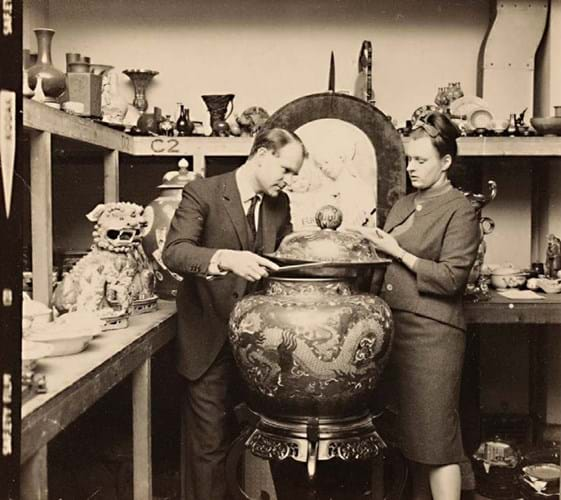
An image of Anthony du Boulay originally published in the Arts of Asia July-August 2019 issue and kindly sent to ATG for use here.
Photograph courtesy of Arts of Asia magazine
Anthony retired from Christie’s in 1980, after auctioning some of the finest Asian and European ceramics offered over 30 years. In building Christie’s reputation as one of the world’s two leading auction houses of Chinese art, he laid the foundations for the colossal expansion in the Asian art business.
Having written three practical illustrated books and many articles on Chinese ceramics at Christie’s, he published in 2019 a catalogue of Winchester’s Duberly Collection.
For the first time, he systematically examined and inventoried the ceramic holdings of The National Trust. His active and generous patronage of the French Porcelain Society led to his election as its president, complementing his earlier election to the Oriental Ceramic Society Council.
Sharp eye
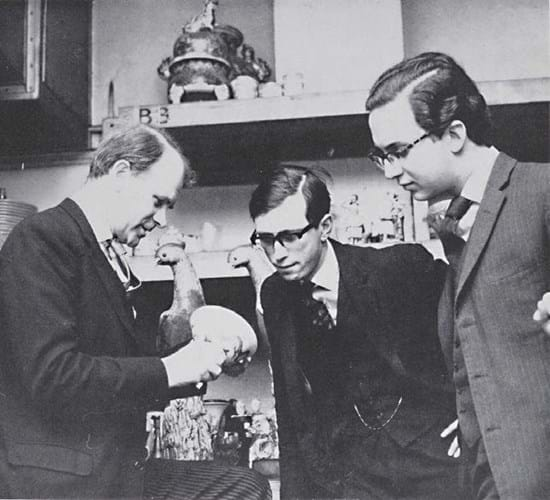
An image of Anthony du Boulay originally published in the Arts of Asia July-August 2019 issue and kindly sent to ATG for use here.
Photograph courtesy of Arts of Asia magazine
Anthony’s affection for all ‘pots’ balanced a sharp eye honed by decades of identifying and authenticating them.
Socially confident and entertaining, a traveller who enjoyed exploring Europe and the US, and an outstanding Olympic-level skier, he was never shy to venture an opinion, but sensitive enough to soften forthright opinions whenever his devoted wife Judith interposed a laconic but icy aside, “Really, Anthony…!”
Anthony survived Judith by only a few weeks, and they had no children; but as Anthony always said, Judith was “the most valuable discovery” of his life. Anthony never lost his discerning eye, nor his absolute affection for Judith, his family, his friends and his collections.

